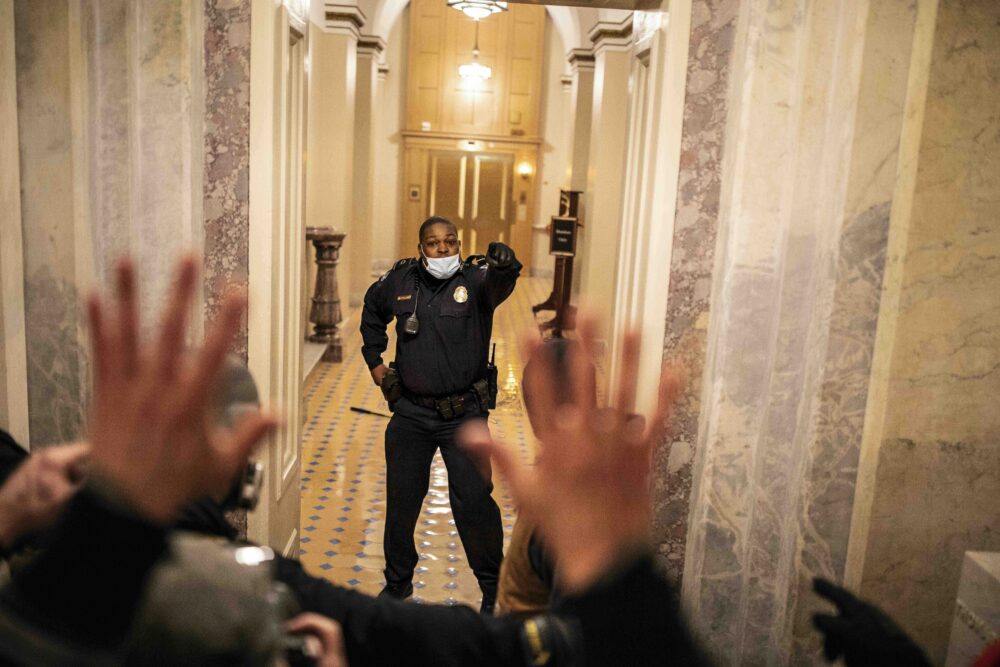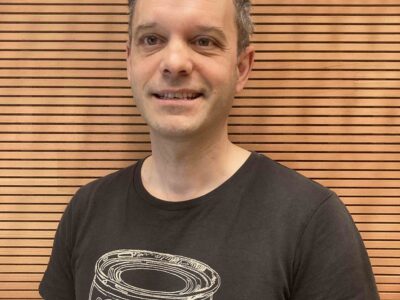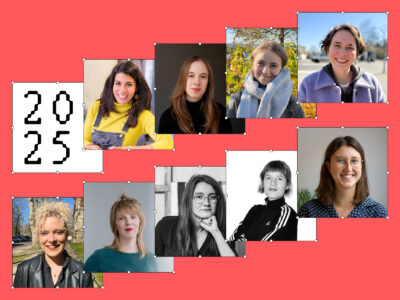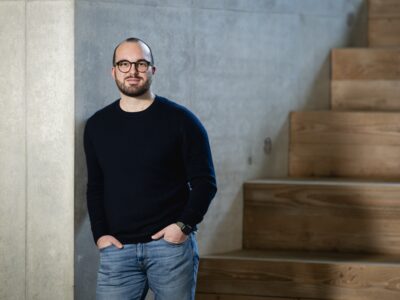We cannot afford fake images
The crisis of democracy and the media change how we perceive reality. Where previously reporters looked for truth, we now have images generated by artificial intelligence. Photojournalism, as such, has never been so important.
A guest article by Sven Ehmann of the laif foundation

Were there any witnesses to Trump and Netanjahu‘s chill-out session at a pool in Gaza? Was anyone there to see Putin being taken away in handcuffs, or the pope wearing a huge white puffer jacket? Absolutely not, because none of it ever happened. And yet we take in and allow ourselves to be provoked and seduced by these slick, new, AI-generated images. This is the aesthetic of our current post-facts era. Liked and shared by millions, these fake images are superimposed over the reality of what is actually happening in the world.
We have long been overwhelmed by this torrent of images on social media. Yet we now face a significantly heavier flood of realistic, AI-generated images. A picture speaks a thousand words? Perhaps, but the same would hold for poor-quality, artificial, and fake images. What stories do they tell? Whose narratives do they spread? What prejudices do they engender? These images are very powerful. They set in, take root, and shape public discourse. They stimulate, provoke, and distract us. In our everyday lives, during election campaigns, throughout the media, and amidst this masse of unclear motives, we lose all oversight, all insight and all perspective. We are unlearning how to recognise which photos are credible and worth paying attention to, we are unlearning how to read, understand, and scrutinize them. Our image of reality is becoming ever more blurred.
As we stand helplessly between the omnipresence of smartphones and the omnipotence of AI, one thing is absolutely clear: photojournalism was never so important. We need to be able to see when fire or war break out or when democracy comes under threat. And we need to be able to see when peace is made or when forests are replanted. We want to see it and to be able to believe it. Fictitious visual motifs that are the results of mere prompts are not enough, they are too artificial. What we need is humanity.
Photographs produced by professional photojournalism show us the most important parts of reality, they show us the most decisive moments. They are more direct and unmediated than other media. But photographs like this can only emerge when somebody is there on the ground as a firsthand witness. This is the work of photojournalists. They are at once photographers and journalists. They do intensive research and are there on the ground in precarious situations to see exactly what’s happening so that we, in turn, are given an overview and can form an opinion of our own.
The work of professional photojournalists is not limited to snapshots or short snippets lasting only a few seconds. They are on the ground for longer and are more deeply enmeshed in the issues. They take the time to personally approach the relevant situations, and the people involved. And it is encounters like these that lead to photo stories that do not (only) show the spectacular sides of things but also the secondary stories, the true, accurate, and perhaps more important aspects. Their images write our stories and shape our collective consciousness. Whether it’s “Blue Planet”, the liberation of Auschwitz, 9/11, or refugees after crossing the Mediterranean, all of these moments have been captured by images that immediately `come to mind. That is the work of photojournalists. Now, and every single day.
It is demanding work and is becoming increasingly difficult, and increasingly dangerous. It is demanding because photojournalists want to be true to the complexity with the (series of) images they produce. It is increasingly difficult because they are paid less and less well. It is increasingly dangerous because the tools they carry make photojournalists easy to spot and attack. And with photojournalists increasingly denied access to relevant areas, there may no longer be any journalistic photography for some of the most important event of our lifetime. Indeed, a time may come when every image, including historical images, will end up – as the author, Fred Ritchin, put it – “AI-washed”.
With newspaper circulation in decline and magazines no longer able to produce profitably, editorials are cutting their photography budgets and photographers are getting fewer contracts. “We couldn’t afford good pictures”. And yet the preliminary work of photographers often provides the foundation for longer pieces. As far as the reader is concerned, what chances are there that the piece itself will be interesting if the accompanying image already says nothing at all?
As a society, can we afford to – and do we want to – sacrifice a human perspective while artificial intelligence deludes us with fantasy worlds? As long as we have independent courts, credible media, and an attentive public sphere, our task will be to develop new models such that professional, independent, and serious photojournalism will continue to exist and be disseminated. There are a number of initiatives leading the way:
The Content Authenticity Initiative brings together tech firms, camera manufacturers, and media outlets with a view to establishing technology that documents where an image comes from and every change it has undergone from the very moment the shutter button was pressed. This allows us to verify exactly what we are seeing. The Four Corners Project follows a similar line. It allows the author of an image to include more information on its specific context, which is then available for viewers.
Photojournalistic projects are also taking action. The Initiative, Writing with Light, of which laif is a member, has been elaborating foundational professional principles that can be easily understood by the public and by editors. At the same time, a new generation of photographers is finding new visual languages for new topics. The collective, Docks, for example, works to bring light to what otherwise goes unseen , to rendering the abstract concrete, and to bringing whatever is relevant into public discourse. They reach their audience via classical media channels as well as with their own publications, events, and with a great deal of excitement for experimentation.
Innovate projects focussing on the economics of media – in order to allow photojournalists to finance their projects and live from their work – are both rare and particularly relevant here. We need new business models and public-interest-orientated programs with actors who recognise the value of the photograph both as a source of information and, fundamentally, as an impulse for encounters, dialogue, and participation. The US initiatve Catchlight serves as an excellent example. They support local media by covering a portion of the wages of salaried photographers. They also provide their beneficiaries with access to a central image editing centre. As such, they are a remarkable example of how photojournalism is still – or, perhaps, is once again – possible. Moreover, they show how businesses, political foundations, and members of the public can sustainably support such endeavours. We may live in difficult times, but they are not hopeless.
Photojournalism shows us what is actually there. Demand images of this standard, demand clarity in terms of the sources, the circumstances and the intentions surrounding their production. Support and protect photographers and their work, create or give your backing to these new models. Above all: look closely, reflect, inform yourself and take part in public discourse. Let’s celebrate photos that are credible and worth seeing
The laif Foundation is one of the many organisations that calls Publix its home. They work in the interests of independent photojournalism and a well-informed public.
Photo: If journalists are denied access to relevant spaces, there will no longer be images like this one. This police officer was photographed following the attack on the US Capitol on January 6th. The photo became a symbol for the vulnerability of democracy. © Ashley Gilbertson/VII/Redux/laif


